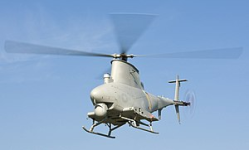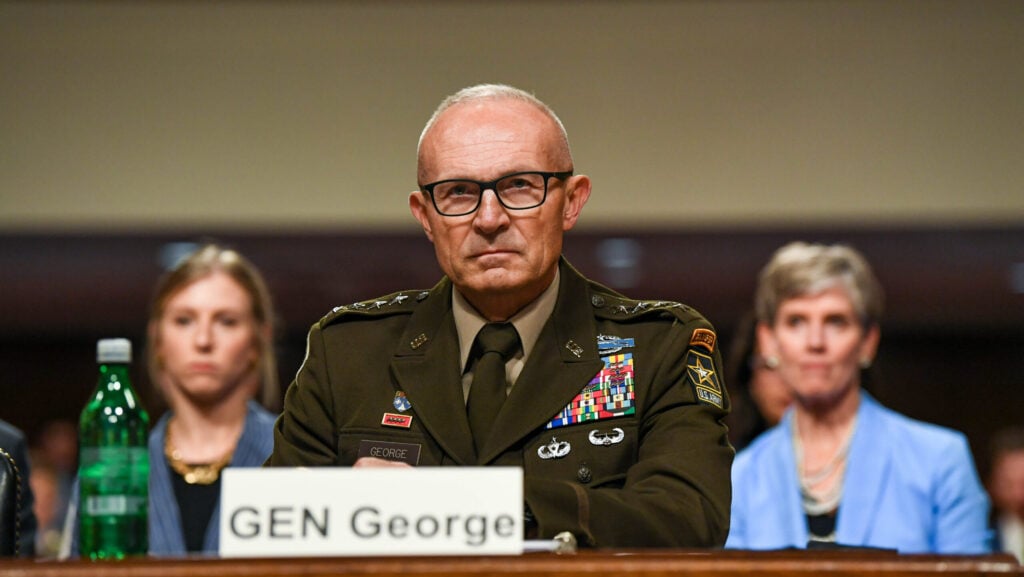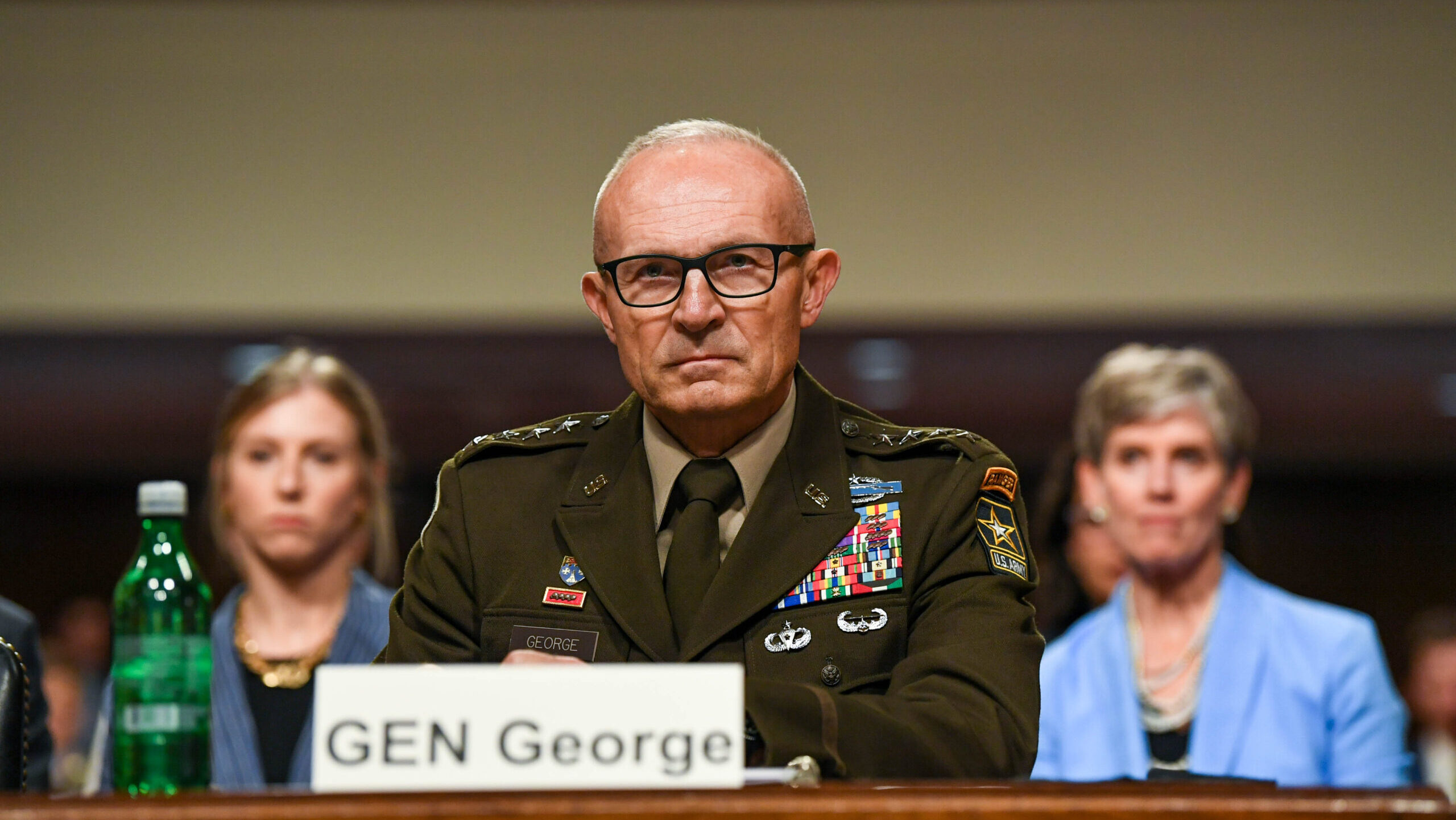until you are sitting on "Omaha Beach" watching your autonomous warehouse sailing out of formation and delivering its cargo to the folks on the other side.But that is the direction of travel. Especially when people are having fewer kids, forces are having more trouble recruiting and the operating distances are increasing.
You are using an out of date browser. It may not display this or other websites correctly.
You should upgrade or use an alternative browser.
You should upgrade or use an alternative browser.
Future Helicopters
- Thread starter a_majoor
- Start date
- Reaction score
- 7,348
- Points
- 1,160
The trade off is bigger vessels, with crews that need to be hired, trained and protected, which drives up costs, which means fewer "warehouses afloat". It would also mean fewer supplies available.
If you keep your distribution costs down then you can spend more on the stuff you are distributing.
Sometimes it is worth accepting the losses and sending another package instead.
Or, if worst comes to worst and you are really concerned about spoofing in the last mile you could put a human pilot on board to manage that movement. These autonomous vessels are defined as optionally manned.
If you keep your distribution costs down then you can spend more on the stuff you are distributing.
Sometimes it is worth accepting the losses and sending another package instead.
Or, if worst comes to worst and you are really concerned about spoofing in the last mile you could put a human pilot on board to manage that movement. These autonomous vessels are defined as optionally manned.
- Reaction score
- 18,532
- Points
- 1,360
I think for the larger systems, that yes, there will be a trend to increased automation/augmentation. Possibly the OPV(optionally-piloted vehicle) aspect expanded. I do think, though, that in the smaller/supportive systems, that autonomous/semi-autonomous systems will become increasingly involved in ops.For most systems I think highly automated as opposed to autonomous is a better route.
In the fine print of the FARA cancellations, the autonomous helicopters where also canned.
daftandbarmy
Army.ca Dinosaur
- Reaction score
- 26,590
- Points
- 1,160
I think for the larger systems, that yes, there will be a trend to increased automation/augmentation. Possibly the OPV(optionally-piloted vehicle) aspect expanded. I do think, though, that in the smaller/supportive systems, that autonomous/semi-autonomous systems will become increasingly involved in ops.
Serious question, for a change...
What are the advantages of a 'crewed' helicopter platform over an 'uncrewed' platform?
I assume it will be similar to those for other types of aircraft...
- Reaction score
- 18,532
- Points
- 1,360
At the moment, it’s a technology coping/managing the situation vs uncertainty/ambiguity in ops challenge. Automation isn’t really advanced to the point where the AI has enough to form an adaptive, resilient rule set to support full-on task/retask/no task-plan but get out there and just do it kind of op, especially where you may have 10-30+ pers in the back. True, banana-eaters in the cockpit can screw up too, but I think that autonomous systems will focus on sensing and destroying, so not as much concern for loss of operator life during ops.Serious question, for a change...
What are the advantages of a 'crewed' helicopter platform over an 'uncrewed' platform?
I assume it will be similar to those for other types of aircraft...
- Reaction score
- 7,348
- Points
- 1,160
Another aspect in all of this is the rapid commercialization of these technologies. The army got out of the autonomous truck business not because they didn't want autonomous trucks but because industry was building autonomous trucks faster that the army was developing their milspec solutions.
Why set up a horseless carriage factory in the Pentagon when Henry Ford is cranking out trucks?
...
Likewise why spend money trying to lighten a Bell 407 and turn it into an effective UAV when somebody has already got where you want to go by taking a different approach?
 272 kg capacity
272 kg capacity

 en.wikipedia.org
en.wikipedia.org
 300 kg capacity
300 kg capacity
Why set up a horseless carriage factory in the Pentagon when Henry Ford is cranking out trucks?
...
Likewise why spend money trying to lighten a Bell 407 and turn it into an effective UAV when somebody has already got where you want to go by taking a different approach?
 272 kg capacity
272 kg capacity
Northrop Grumman MQ-8 Fire Scout - Wikipedia
 300 kg capacity
300 kg capacity- Reaction score
- 18,532
- Points
- 1,360
Another aspect in all of this is the rapid commercialization of these technologies. The army got out of the autonomous truck business not because they didn't want autonomous trucks but because industry was building autonomous trucks faster that the army was developing their milspec solutions.
Why set up a horseless carriage factory in the Pentagon when Henry Ford is cranking out trucks?
...
Likewise why spend money trying to lighten a Bell 407 and turn it into an effective UAV when somebody has already got where you want to go by taking a different approach?
View attachment 83013 272 kg capacity

Northrop Grumman MQ-8 Fire Scout - Wikipedia
en.wikipedia.org
View attachment 83014 300 kg capacity
…comparing apples to snowblowers
Firescout - 925km at 272kg
T650 - 30km at 300kg
So Firescout carries 10% less but flies 2980% further….remind me the point you were making, again?
- Reaction score
- 7,348
- Points
- 1,160
…comparing apples to snowblowers
Firescout - 925km at 272kg
T650 - 30km at 300kg
So Firescout carries 10% less but flies 2980% further….remind me the point you were making, again?
What are you trying to do?
Firescout is built for recce and surveillance. The Malloy is built for short hops from a cache/warehouse to a forward position.
Firescout started out as a crewed beast and its structure still reflects that heritage.
- Reaction score
- 18,532
- Points
- 1,360
What are you trying to do?
Answer what you asked…
Hence pointing out the skewed nature of your payload/range strawman…Likewise why spend money trying to lighten a Bell 407 and turn it into an effective UAV when somebody has already got where you want to go by taking a different approach?
Firescout is built for recce and surveillance. The Malloy is built for short hops from a cache/warehouse to a forward position.
So why was I wrong about this point I made in response to your juxtaposition?
…comparing apples to snowblowers
…and does a pretty good job returning to a ship, landing-in and being refueled and relaunched…Firescout started out as a crewed beast and its structure still reflects that heritage.
A practical application of modification of existing technology and platforms to provide new capability in a timely and modest investment.
Same as the USMC did converting K-Max helicopters into autonomous logistics platforms.
- Reaction score
- 7,348
- Points
- 1,160
Answered fairly.Answer what you asked…
Hence pointing out the skewed nature of your payload/range strawman…
So why was I wrong about this point I made in response to your juxtaposition?
…and does a pretty good job returning to a ship, landing-in and being refueled and relaunched…
A practical application of modification of existing technology and platforms to provide new capability in a timely and modest investment.
Same as the USMC did converting K-Max helicopters into autonomous logistics platforms.
- Reaction score
- 7,348
- Points
- 1,160
Interesting Courses of Action
Focus on the now and not the never-never.
Work with what is at hand - Chinooks and Apaches
Uprade the software and systems and add AI to the Pilot/Gunner
Don't replace them.
Pump money into munitions and establish long term contracts and relations with vendors.
On UAVs

 breakingdefense.com
breakingdefense.com
Focus on the now and not the never-never.
Work with what is at hand - Chinooks and Apaches
Uprade the software and systems and add AI to the Pilot/Gunner
Don't replace them.
Pump money into munitions and establish long term contracts and relations with vendors.
On UAVs
as it looks at its future aviation drones, it needs to make sure that they can be produced by the thousands and that they can change systems every few years. The Army should not lock itself into a decades long program for unmanned aviation systems and instead should be buying from multiple vendors, rewarding those who innovate and enticing new entrants with procurement contracts ready to go.
Terminating the FARA helo program was the right call by the Army chief
In this op-ed retired Army Maj. Gen. John Ferrari lays out why FARA had to go, and where Army aviation should fly from here.
By JOHN FERRARIon February 09, 2024 at 10:33 AM

Army Vice Chief of Staff Gen. Randy George answers questions from members of the Senate Armed Services Committee during his confirmation hearing at the Dirksen Senate Office Building, Washington, D.C., July 12, 2023. George was nominated to become the next Army Chief of Staff by President Joseph R. Biden. (U.S. Army photo by Sgt. David Resnick)
The tremor Army aviators felt in their bones Thursday evening was the result of the Army’s surprise decision to scrap one of its marquee, high-dollar future rotorcraft programs in favor of investing in current platforms. In the op-ed below, former senior Army officer and acquisition expert John Ferrari says the move is a good start.
Last night, the Army announced that it is terminating one of its two major new-development aviation programs, the Future Attack Reconnaissance Aircraft, as part of a broader aviation rethink. These cuts are the right calls, and should be taken as a sign that Gen. Randy George, the relatively new Army Chief of Staff, is willing to make hard choices.
That’s good, because he has many more he’s likely to have to make. The fiscal dysfunction in Washington, exploding costs associated with nuclear modernization, and lessons learned on the Ukraine battlefield should begin driving changes in long-held modernization plans, and previously sacred cows need to be on the table.
Make no mistake, this was a bold choice by George. The Army had spent almost $2.4 billion developing this helicopter, and had planned to spend many more billions to develop and field it far into the future. But in order to pay these developmental bills, the Army would have had to destroy the industrial base of its existing aircraft fleet at a time of increased global tensions.
The Army is under enormous fiscal pressure coming into the 2025 budget that is to be released (budget watchers hope) in the next few weeks. With a pay raise over 5 percent and a topline only increasing within DoD at 1 percent, procurement and development are likely to be the billpayers. The current strategy within the DoD is to “divest-to-invest,” in essence, kill production of today’s weapons in order to develop weapons for the next decade. That the Army is going against this mantra is significant, signaling the largest service is getting serious about the threat of warfare this decade rather than the next.
While we can expect that some portion of the funds that have been harvested from this decision will go to “pay other bills” such as the pay raise, much of the money is going towards continuing production of the Chinook, an enduring workhorse that many in the Army had wanted to cancel. Additionally, this now sets the tone and provides the money that the Army is going all in on unmanned aerial systems, something that it had over the past few years been avoiding, with its half-in/half-out manned/unmanned platform approach.
The path forward for the Army within armed attack and aviation now appears to be a mix of enduring aircraft — of which the Apache is the best in the world — space, and unmanned systems. So, what should be the next steps for Army aviation? There are two paths I would like to see.
First, on the Apache, Boeing and the Army should be investing heavily in artificial intelligence and gunner/pilot assisted technologies. The Apache is likely to be flying for the next two decades and with software upgrades, it can and will be an important part of the Army’s arsenal.
Second, as it looks at its future aviation drones, it needs to make sure that they can be produced by the thousands and that they can change systems every few years. The Army should not lock itself into a decades long program for unmanned aviation systems and instead should be buying from multiple vendors, rewarding those who innovate and enticing new entrants with procurement contracts ready to go.
And not all changes that the new chief pushes will be in the realm of technology. The Army is currently severely undermanned and without significant reductions in the number of units, it will quickly become a hollow force. The Army also has too many non-commissioned officer billets which will force it to relook if it can keep specialty units like the SFABs. Both these changes need to be on the table.
The emergency supplemental working its way through Congress has $5.3 billion for 155mm artillery, $1.5 billion for PAC-3 missiles, $550 million for Guided Rockets, $960 million for small and medium caliber ammo, and several hundred more for an assortment of other munitions. And yet, the Army needs to show industry in its long-term funding plan that procurement levels will remain high. To do this within its topline, it is going to have to cut, at some point, more of its research and development funds.
Some will want to criticize the Army for this decision. Some will decry the $2.4 billion spent as wasted. None of the criticism, however, will overcome the fact that the new Army Chief is proving that he can make difficult and independent decisions. That’s good for the Army, and it’s vital that his colleagues across the services take note — and start taking a critical eye at their own long-term plans.
Maj. Gen. John Ferrari, US Army (ret.), is a visiting fellow at the American Enterprise Institute (AEI) and is the former director of program analysis and evaluation for the US Army.

Terminating the FARA helo program was the right call by the Army chief - Breaking Defense
In this op-ed retired Army Maj. Gen. John Ferrari lays out why FARA had to go, and where Army aviation should fly from here.
- Reaction score
- 16,946
- Points
- 1,260
Satire? Or Truth from the Duffleblog…

 www.duffelblog.com
www.duffelblog.com

DOD: Maybe this Osprey thing was actually a bad idea?
Boeing: "No, no, it's all good."
 www.duffelblog.com
www.duffelblog.com
- Reaction score
- 22,113
- Points
- 1,090
Satire? Or Truth from the Duffleblog…

DOD: Maybe this Osprey thing was actually a bad idea?
Boeing: "No, no, it's all good."www.duffelblog.com
Best quote ever: more temperamental than a two-star general passed over for that third star.
That article is a quote gold mine.Best quote ever: more temperamental than a two-star general passed over for that third star.
armrdsoul77
Full Member
- Reaction score
- 366
- Points
- 930
"But can you really put a price tag on an aircraft that can take off vertically, fly horizontally, and crash diagonally?”That article is a quote gold mine.
- Reaction score
- 895
- Points
- 1,060
It would be cool if the article was cited as a secondary source in a CMJ article. The author would qualify: “As For Class is a boy named Sue, named Ashley. When he isn’t writing for Duffel Blog he also writes fiction.”
Spencer100
Army.ca Veteran
- Reaction score
- 2,179
- Points
- 1,040
Another aspect in all of this is the rapid commercialization of these technologies. The army got out of the autonomous truck business not because they didn't want autonomous trucks but because industry was building autonomous trucks faster that the army was developing their milspec solutions.
Why set up a horseless carriage factory in the Pentagon when Henry Ford is cranking out trucks?
...
Likewise why spend money trying to lighten a Bell 407 and turn it into an effective UAV when somebody has already got where you want to go by taking a different approach?
View attachment 83013 272 kg capacity

Northrop Grumman MQ-8 Fire Scout - Wikipedia
en.wikipedia.org
Hmmmmm looks around......but about that Bell 407!


Northrop Grumman MQ-8C Fire Scout - Wikipedia
MQ-8C Fire Scout is a Bell 407..........
Similar threads
- Replies
- 5
- Views
- 5K
- Replies
- 17
- Views
- 9K
- Replies
- 31
- Views
- 22K

